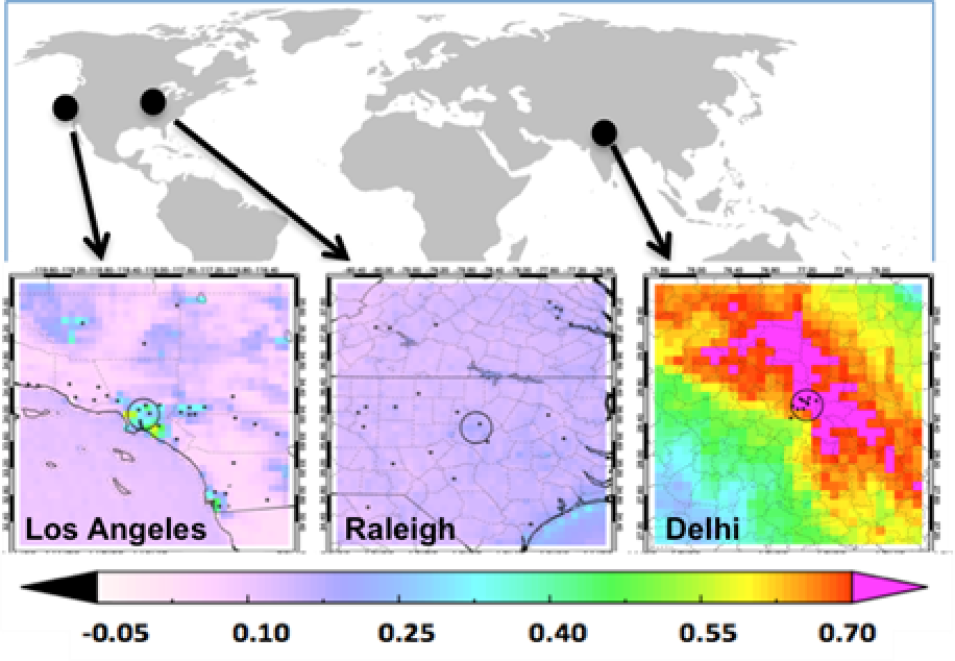Prakash Doraiswamy, Research Triangle Institute
The term particulate matter (PM) refers to particles of solids and liquids, also known as aerosols, that are suspended in the air. Scientists and health officials are especially interested in PM with diameters less than 2.5 micrometers (PM2.5) near Earth's surface because particles of this size can be especially effective at reducing air quality and be harmful to human health.
Due to their ability to scatter and absorb sunlight, aerosols can be effectively observed by satellites. However, satellites tend to be most sensitive to the integrated light scattering and absorption over the entire depth of the atmosphere, deriving a quantity known as aerosol optical depth (AOD). While AOD can sometimes be used to infer the PM2.5 concentration at the surface, it is not a surface measurement. Since it is far too expensive to provide reference surface measurements everywhere on Earth we must rely on satellites to help fill in the gaps.
The objective of the Air Quality Citizen Science project is to add value to AOD measurements obtained by NASA's suite of orbiting satellites. Citizen scientists are helping to create a network of high quality, low-cost sensors (manufactured by PurpleAir) in three regions with varying levels of air quality: Los Angeles, California; Raleigh, North Carolina; and Delhi, India. The citizen scientists deploy and maintain the sensors and transmit the data that is collected to a central database. This data will help NASA validate and interpret the current state of satellite-derived AOD estimates.
In addition to helping NASA missions, citizen scientists also have the opportunity to use the data to understand their own local air quality. Participants attend workshops where they learn to analyze the data and see how those data are helping NASA. With the participation of local citizen scientists, such sensor networks can provide a cost-effective and sustainable method of data collection, while enhancing NASA's mission to develop the next generation of scientists.
Update October 2019
Air Quality Citizen Science has developed a comprehensive sensor installation toolkit which includes step-by-step instructions, infographics, and guidance on sensor placement. The toolkit is currently being updated to include the basics of remote satellite data, as well as guidelines for how citizen scientists can engage with the project.
As of date, the project has deployed nearly 180 PurpleAir sensors in Southern California, including the sensors deployed during the feasibility study. Generally located northwest and southeast of Los Angeles, these sensors are collecting PM2.5 data and report approximately every two minutes to an open-access database. Two citizen-science workshops were held in Southern California region where volunteers received basic training on sensor installation and sensor data analysis and interpretation.


